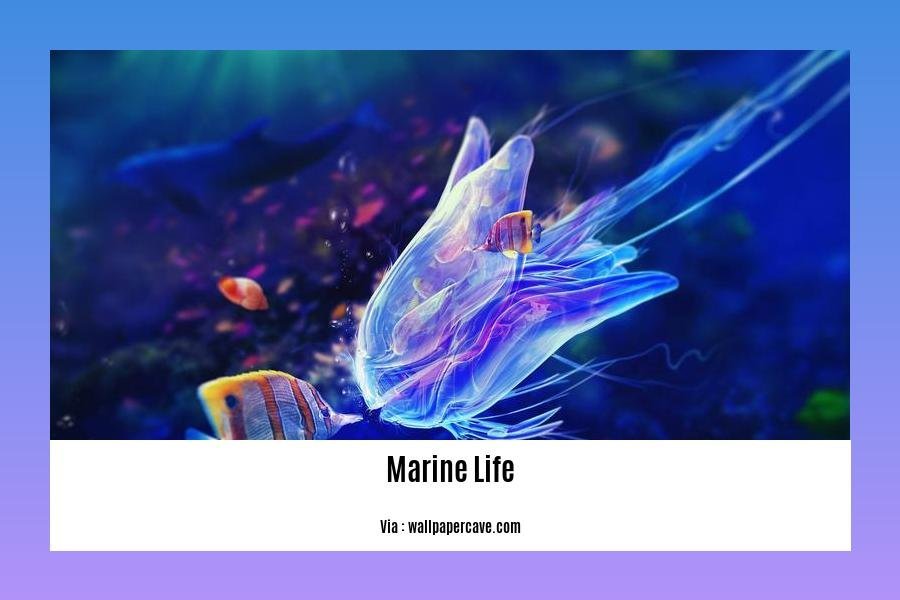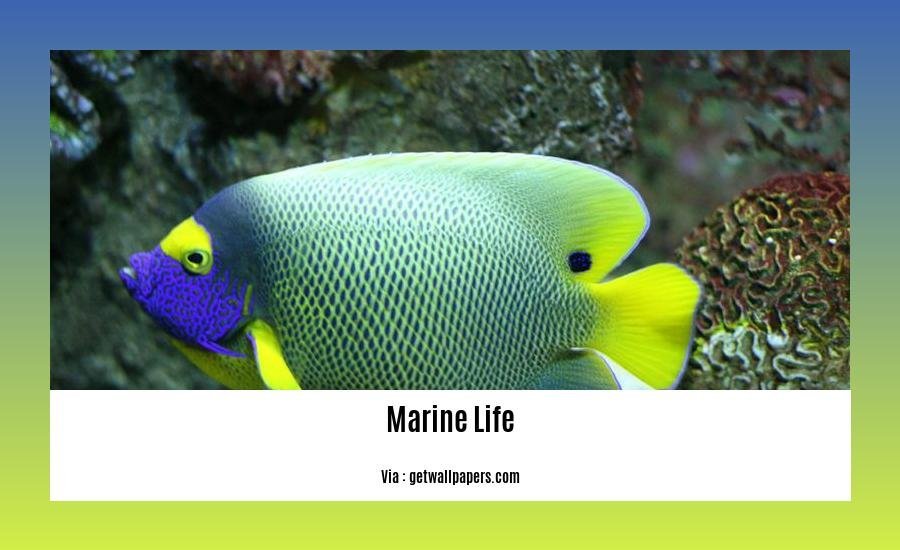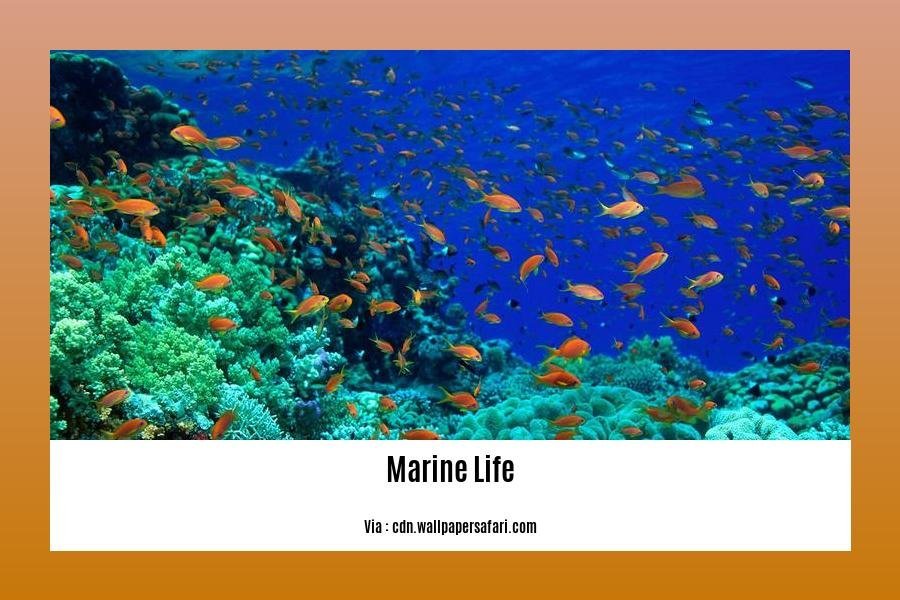Welcome to a captivating journey through the mesmerizing world of marine life as we delve into the fascinating facts that make these underwater creatures so intriguing. In this article, titled “Fascinating Facts About Marine Life: Exploring the Intriguing World Beneath the Waves,” we will dive deep into the diverse ecosystems and extraordinary creatures that inhabit our oceans, uncovering remarkable insights about their incredible adaptations, behaviors, and the fragile balance of their marine environments. Prepare to be awe-struck by the wonders that await us beneath the waves.
Key Takeaways:
- Marine organisms, especially microorganisms, play a crucial role in producing oxygen and capturing carbon.
- Marine life contributes to shaping and safeguarding shorelines, and some organisms like corals help in the formation of new land.
- Majority of life forms originated in marine habitats.
- Oceans provide about 90% of the planet’s living space when measured by volume.
- An estimated 50-70% of Earth’s total life can be found in the oceans.
- Humanity has only explored approximately 10-20% of the ocean.
- There are currently around 230,000 known marine species, but potentially millions more are yet to be discovered.
- Marine biodiversity is experiencing a worrisome decline.
- For fascinating facts about fish, you can refer to NOAA Fisheries.
Facts About Marine Life

Marine life has captivated scientists and nature enthusiasts for centuries. The vast oceans of our planet hold a multitude of secrets, from incredible adaptations to astonishing behaviors. In this article, we will delve into the fascinating world of marine life and discover some intriguing facts that will surely leave you in awe.
The Wonders of the Underwater Realm
The sheer diversity of marine life is mind-blowing. Did you know that there are around 230,000 classified marine species, but scientists estimate that there could be two million or more yet to be discovered? This astonishing number highlights just how little we know about the creatures that inhabit our oceans.
Exploring the Unknown
Humans have only explored a mere 10-20 percent of the ocean, leaving the majority of it uncharted territory. This fact alone makes you wonder what mysteries and astonishing creatures are silently thriving in the depths, waiting to be discovered by intrepid explorers.
Guardians of Coastlines
Marine life doesn’t just exist for its own sake; it plays a vital role in shaping our planet. Many marine organisms, particularly microorganisms, produce oxygen and help in carbon sequestration. These tiny creatures are the unsung heroes of our planet’s atmosphere, contributing significantly to the air we breathe.
Furthermore, marine life plays a crucial role in shaping and protecting coastlines. Coral reefs, for instance, are not only breathtakingly beautiful but also act as natural barriers, attenuating wave energy and safeguarding shorelines from erosion. It’s extraordinary to think that these intricate structures are actually built by tiny coral polyps over centuries.
The Cradle of Life
It’s fascinating to note that marine habitats serve as the birthplace for most life forms on Earth. The oceans provide about 90% of the living space on the planet, both in terms of area and volume. This vast expanse of marine environments has nurtured the evolution of countless species, from the simplest microorganisms to the complex organisms we find today.
A Declining Biodiversity
Sadly, marine biodiversity is under threat. Human activities, such as overfishing, pollution, and habitat destruction, are causing a decline in marine life at an alarming rate. It is crucial for us to recognize the importance of protecting these valuable ecosystems and take action to conserve the earth’s underwater biodiversity for generations to come.
Fish Facts that Amaze
While there are numerous incredible facts about marine life, let’s not forget about our finned friends. Fishes are mesmerizing creatures with unique characteristics. Did you know that some fish species can change their colors or patterns to blend seamlessly with their surroundings? It’s their way of camouflaging and remaining undetected by predators.
Some fish have developed unique adaptations to survive in harsh conditions. Take, for example, the remarkable ability of lungfish to breathe air when water levels are low. These species have modified swim bladders that enable them to extract oxygen from the air, allowing them to thrive in environments that would otherwise be inhospitable.
Conclusion
The world beneath the waves holds an endless array of wonders that continue to astonish scientists and nature enthusiasts alike. From the diverse array of marine species to the crucial role they play in shaping our planet, marine life is a true marvel. However, with declining biodiversity and the need for conservation, it is essential for us to appreciate and protect this fragile underwater realm. So, the next time you gaze at the vast expanse of the ocean, remember that there is so much more lying beneath the surface, waiting to be discovered and cherished. Let’s embrace the responsibility to learn, protect, and conserve the mesmerizing world of marine life.
If you’re curious about fascinating facts about house cats, you’ll want to check out our article on facts about house cats. Prepare to be amazed by what you discover!
Are you ready to dive into the stunning world of marine animals? Learn interesting and mind-boggling facts about marine animals that will leave you in awe of our underwater friends.
Get ready to explore the depths of the ocean and learn intriguing facts about ocean animals. Discover the wonders that lie beneath the surface and uncover the incredible secrets of the deep blue sea.
The fascinating adaptations of marine organisms

Did you know that marine organisms have incredible adaptations that enable them to survive and thrive in their underwater world? From structural and physiological features to behavioral strategies, these adaptations are a testament to the ingenuity of life beneath the waves. Let’s dive into the captivating world of marine organisms and explore their fascinating adaptations.
Structural Adaptations: Built for Survival
Marine organisms have a wide array of physical features that help them navigate and survive in their environment. Their structural adaptations are key to their success in the ocean. Fins, for example, serve as both propulsion and steering mechanisms, allowing fish and other marine animals to navigate through the water with grace and precision. Scales not only provide protection but also minimize friction, enabling streamlined movement. And let’s not forget about gills, which are specialized organs that enable organisms to extract oxygen from water, ensuring their survival in an aquatic habitat.
Another remarkable structural adaptation is the swim bladder. This unique organ acts as a buoyancy control device, allowing certain fish species to adjust their position in the water column. By regulating the amount of gas in their swim bladder, these fish can ascend or descend, exploring different depths and adapting to the conditions of their environment.
Physiological Adaptations: Masters of Regulation
Marine organisms have also developed physiological adaptations that allow them to regulate their bodily functions in an oceanic environment. One of the most notable adaptations is their ability to maintain the same temperature as the surrounding water. This makes them ectothermic or cold-blooded, in contrast to warm-blooded animals like mammals and birds.
Being ectothermic has its advantages. Marine organisms can conserve energy by utilizing the ambient temperature of the water to regulate their metabolism. This flexibility allows them to thrive in diverse habitats and withstand fluctuations in water temperature that would be challenging for warm-blooded creatures. It’s a remarkable adaptation to an ever-changing environment.
Behavioral Adaptations: Strategies for Success
Marine organisms showcase an impressive array of learned or inherited behaviors that aid in their survival and reproductive success. One such adaptation is bioluminescence, the ability to produce light through a chemical reaction. Many organisms in the deep ocean utilize bioluminescence to attract prey or mates in the darkness. This adaptation helps them navigate and communicate effectively, even in the absence of sunlight.
Other behavioral adaptations can include hunting techniques, communication methods, and mating rituals specific to each marine species. For example, whales use intricate vocalizations to communicate, navigate, and hunt prey. Visual displays and chemical signals are also employed by various organisms to convey messages and establish social hierarchies.
Adaptations to Different Environments: A World of Diversity
The ocean is vast and diverse, with countless habitats and environmental conditions. And marine organisms have adapted to these varied environments in remarkable ways. Their adaptations can be categorized into structural, physiological, and behavioral characteristics.
Structural adaptations involve physical features such as shape, body covering, and internal organization that help organisms thrive in their specific habitats. For example, streamlined bodies and powerful tails enable dolphins and sharks to excel in open waters, while suction cup-like structures allow certain marine invertebrates to cling onto rocky surfaces.
Physiological adaptations are geared towards metabolism and bodily functions. Organisms in extreme environments, such as the deep sea hydrothermal vents, have evolved unique adaptations to survive the high pressure, lack of sunlight, and toxic chemicals found in these environments.
Behavioral adaptations encompass learned or inherited behaviors that aid in survival. These adaptations can include communication methods, feeding strategies, and reproductive rituals tailored to specific habitats and ecological niches.
Key Takeaways:
- Marine organisms possess fascinating adaptations that allow them to survive and thrive in their undersea world.
- Structural adaptations, such as fins, scales, gills, and swim bladders, contribute to the organisms’ ability to navigate, protect themselves, breathe, and control their buoyancy.
- Physiological adaptations make marine organisms ectothermic or cold-blooded, enabling them to regulate their bodily functions in response to the surrounding water temperature.
- Behavioral adaptations encompass strategies like bioluminescence, communication methods, hunting techniques, and mating rituals that aid in survival and reproductive success.
- These adaptations are tailored to different marine environments, including diverse habitats and varying environmental conditions.
Sources:
– Lumen Learning – Ocean Life
– Science Learning Hub – Marine Organisms and Adaptations
The role of marine life in regulating Earth’s climate
Oceans, the expansive bodies of water that cover most of the Earth’s surface, play a crucial role in regulating the planet’s climate. Their ability to absorb and store heat and carbon dioxide is essential for mitigating the effects of climate change. Let’s explore the fascinating ways in which marine life contributes to this vital process.
Understanding the Climate-Regulating Power of Oceans
-
Heat and Carbon Dioxide Absorption: Oceans have the remarkable capacity to absorb and store large amounts of heat and carbon dioxide. These gases are major contributors to climate change, and the oceans act as carbon sinks, reducing their concentrations in the atmosphere.
-
Heat Transport: By covering 70% of the Earth’s surface, the ocean plays a crucial role in transporting heat from the equator to the poles. This heat distribution helps regulate global temperatures and influences climate and weather patterns worldwide.
Threats to Marine Ecosystems and Climate Regulation
-
Ocean Acidification: Increasing carbon dioxide levels in the atmosphere lead to ocean acidification, which poses a threat to marine life. Acidic waters can harm coral reefs and other marine organisms, disrupting their ability to contribute to climate regulation.
-
Rising Sea Temperatures: As sea temperatures rise due to global warming, marine ecosystems face immense challenges. Coral reefs, in particular, are vulnerable to temperature increases, which can lead to bleaching and the loss of these vital habitats.
-
Sea-Level Rise: The melting of polar ice caps and glaciers contributes to rising sea levels. This rise poses a significant risk to coastal communities and ecosystems, highlighting the need to protect and preserve marine habitats.
The Vital Connection Between Marine Life and Climate Regulation
-
Carbon Sequestration: Marine life, including microorganisms, plays a crucial role in carbon sequestration. Through processes like photosynthesis, they absorb and store carbon dioxide, helping to reduce greenhouse gas concentrations and regulate climate.
-
Coastline Protection: Coral reefs, mangroves, and other marine habitats provide critical protection against storm surges and erosion. By acting as natural barriers, they safeguard coastlines and the communities that depend on them.
-
Species Diversity: Marine biodiversity supports the resilience of ecosystems and contributes to climate regulation. A healthy and diverse range of species ensures that marine ecosystems can adapt to environmental changes and continue their vital climate-related functions.
Key Takeaways:
- Oceans absorb and store heat and carbon dioxide, mitigating the effects of climate change.
- The ocean transports heat, regulating global temperatures and influencing climate and weather patterns.
- Ocean acidification, rising sea temperatures, and sea-level rise threaten marine ecosystems and their climate-regulating capabilities.
- Marine life, including microorganisms, helps sequester carbon dioxide and regulates climate.
- Coastal habitats like coral reefs protect shorelines and communities from erosion and storm damage.
- The diversity of marine species supports the resilience of ecosystems and contributes to climate regulation.
Sources:
– LSE – Explainers: What role do the oceans play in regulating the climate and supporting life?
– World Bank Group: Climate Explainer: Oceans and Climate Change
The threats facing marine life and the need for conservation efforts
Marine life is under constant threat from various human activities and environmental factors. Understanding these threats and the urgent need for conservation efforts is crucial for the preservation of our oceans and the diverse species that call them home. In this article, we will explore the primary threats facing marine life and discuss the importance of conservation measures.
Plastic Pollution: A Grave Threat to Marine Life
One of the most significant threats facing marine life is plastic pollution. Every year, millions of tons of plastic waste end up in the oceans, posing severe risks to marine animals. Plastics, which take hundreds of years to decompose, accumulate in the ocean and can entangle or be ingested by marine species, leading to injury, suffocation, and death. Conservation efforts must focus on reducing plastic consumption and improving waste management to combat this threat.
Coral Bleaching: Devastating Ecosystem Loss
Coral reefs, among the most ecologically diverse habitats on the planet, are under threat from coral bleaching. Rising ocean temperatures, pollution, and ocean acidification disrupt the symbiotic relationship between corals and their algae, causing corals to expel the algae and turn white, a process known as coral bleaching. Without their algae, corals experience starvation and are more susceptible to disease. Conservation efforts must address climate change and reduce pollution to protect these vital ecosystems.
Dead Zones: Oxygen Depletion and Marine Life Loss
Dead zones, areas of oxygen-depleted water, are another significant threat to marine life. Excessive nutrient pollution from sources such as agricultural runoff and sewage discharge leads to harmful algal blooms, which consume oxygen and create dead zones. Marine organisms that cannot escape these areas suffocate and die. Conserving and protecting marine habitats, as well as implementing better waste management practices, can help prevent the formation of dead zones.
Destructive Fishing Practices: Unsustainable Exploitation
Many marine species face overfishing and habitat destruction due to destructive fishing practices. Bottom trawling, for example, involves dragging heavy nets across the seafloor, damaging essential habitats and capturing non-target species. Overfishing disrupts marine food chains, depletes targeted species, and threatens the balance of ecosystems. Implementing sustainable fishing practices, such as regulating fishing quotas and promoting ecosystem-based management, is vital for the long-term preservation of marine life.
Noise Pollution: Disrupting Marine Behaviors
Noise pollution in the oceans, primarily from human activities such as shipping, seismic surveys, and military sonar, can harm marine life. Whales, dolphins, and other marine mammals rely on sound for communication, navigation, and feeding. Excessive noise can disorient and stress these animals, leading to behavioral changes and even strandings. To mitigate this threat, efforts should focus on reducing ocean noise pollution and implementing stricter regulations on underwater acoustics.
Key Takeaways:
- Plastic pollution poses a grave threat to marine life, leading to entanglement and ingestion of harmful plastics.
- Coral bleaching, caused by rising ocean temperatures and pollution, devastates coral reefs and the diverse ecosystems they support.
- Dead zones, caused by excessive nutrient pollution, deplete oxygen and suffocate marine organisms.
- Destructive fishing practices, such as bottom trawling, lead to habitat destruction and overfishing, disrupting marine ecosystems.
- Noise pollution in the oceans can have detrimental effects on marine mammals, causing disorientation and behavioral changes.
Sources:
– National Geographic – Oceans and the Threats They Face
– Ecowatch – Marine Life and Ocean Threats
FAQ
Q1: How much of the Earth’s biosphere do oceans represent?
A1: Oceans represent about 95% of the Earth’s biosphere.
Q2: What percentage of the planet’s living space do oceans provide?
A2: Oceans provide about 90% of the living space on the planet.
Q3: How much of the ocean have humans explored?
A3: Humans have explored roughly 10-20% of the ocean.
Q4: How many marine species have been classified?
A4: There are around 230,000 classified marine species.
Q5: How many marine species are yet to be discovered?
A5: As many as two million or more marine species are yet to be discovered.
- Unveiling the Enigma: Mansoureh Khojasteh Bagherzadeh’s Public Appearances & Private Life in Iran - July 18, 2025
- Unveiling the Mystery: Mansoureh Khojasteh Bagherzadeh’s Husband: A Rare Glimpse into a Private Life - July 18, 2025
- Unveiling Masoud Khamenei’s Mother: Power, Influence, and Iran’s Future - July 18, 2025
















